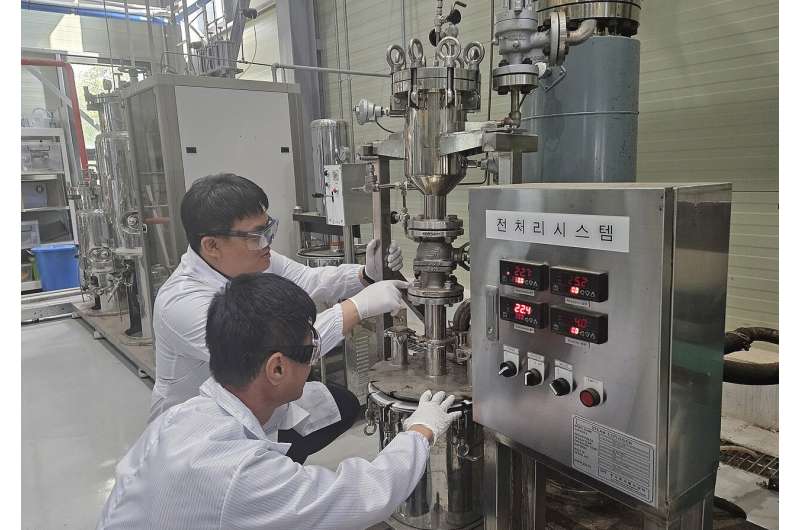This article has been reviewed according to Science X's editorial process and policies. Editors have highlighted the following attributes while ensuring the content's credibility:
fact-checked
peer-reviewed publication
trusted source
proofread
Biofuel from kudzu vines and branches boosts energy efficiency

Leftover branches and kudzu vines from logging are repurposed as carbon-neutral fuel to generate electricity.
Dr. Kyoungseon Min's research team at the Gwangju Clean Energy Research Center of the Korea Institute of Energy Research (KIER) has developed a technology to convert forestry and agricultural waste such as logging residues, kudzu vines, and spent mushroom substrates into solid biofuel that can be co-used as fuel for thermal power plants.
Biomass made from wood and forestry waste, in the form of small pellets (cylindrical) or chips, can be co-used as fuel for thermal power plants. It serves as an important raw material that can replace fossil fuels and achieve carbon neutrality by absorbing carbon dioxide during its growth through photosynthesis. According to the International Energy Agency (IEA), biomass-based power generation is expected to represent 7% of renewable energy generation by 2050.
At the start, biofuel was made using food resources like corn. However, due to the rise of food security concerns, technology that utilizes non-edible biomass as raw material has been extensively studied. Currently, wood pellets made from sawdust are mostly imported and used, and biofuels are produced through a torrefaction process based on heating and drying.
On the other hand, this technique demands high temperatures of over 300 degree of Celsius and results in energy wastage while drying. Furthermore, the equipment can be corroded by the production of minerals such as potassium and sodium.
The research team devised a kind of wet process that utilizes steam, resulting in a reduction of mineral production and heat loss from the raw materials. In addition, they strived to increase the variety of raw materials by utilizing logging residues, kudzu vines, and spent mushroom substrates. These materials were challenging to incorporate into the dry torrefaction process and were previously discarded or unused.

By using the process developed by the research team, raw materials can be processed at a lower temperature approximately 180–200 degree of Celsius, compared to the traditional dry torrefaction process, and exposed to steam for about 8–12 minutes. This weakens chemical bonds, making them easier to break down. Subsequently, a rapid drop in pressure causes the raw materials to break into smaller particles, making them easier to form into pellets.
The small biomass particles are then placed in a device to be compressed into pellet form for use in thermal power plants. To achieve optimal performance, the pellets are made efficient and of uniform quality by adjusting the combinations of chemical composition, temperature, pressure, and the compression ratio of diameter to length.
Analysis of the biofuel produced through this process revealed that as the temperature and time increased, the hemicellulose and mineral content, which hinder combustion efficiency, decreased. Consequently, the higher heating value of the biofuel increased up to a maximum of 22.0 MJ/kg, and the energy recovery rate increased up to a maximum of 95%, successfully demonstrating that the steam-explosion torrefaction is one of the most effective method for utilizing waste biomass.
Dr. Kyoungseon Min, the lead researcher, stated, "Globally, biofuels are recognized as an energy source that directly contributes to solving the issues of the climate crisis and fossil resource depletion."
She added, "This technology, which converts agricultural and forestry waste into solid-type biofuel that can be mixed and co-used in thermal power plants, will help establish a resource circular economy by upcycling waste into an energy source and contribute to achieving carbon neutrality."
The research results were published in Bioresource Technology. The research was conducted with support from the KIER and Gwangju Metropolitan City.
More information: Joon-Pyo Lee et al, Waste to Energy: Steam explosion-based torrefaction process to produce solid biofuel for power generation utilizing various waste biomasses, Bioresource Technology (2023). DOI: 10.1016/j.biortech.2023.130185


















